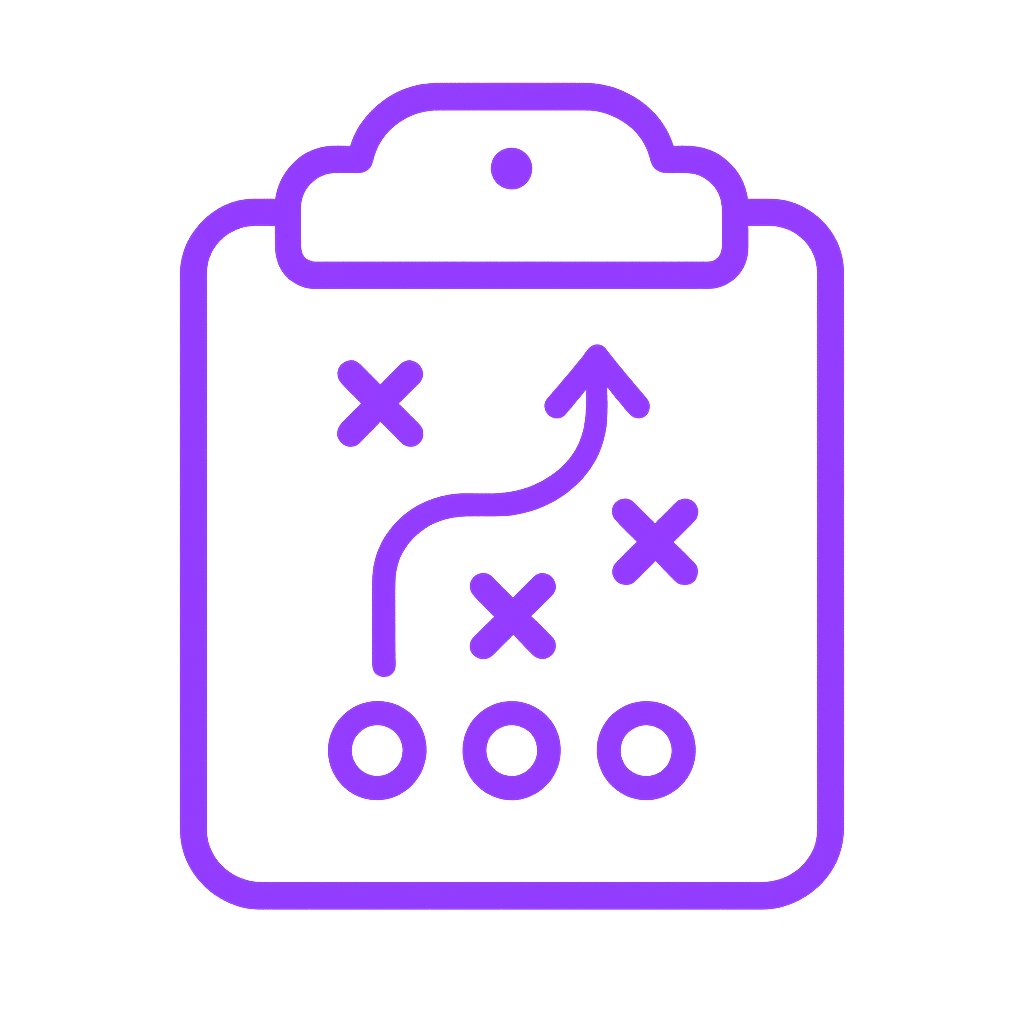Posted by Gigi J.K
in Context-driven AI
in Context-driven AI
Why Context is Taking Over as King in the World of AI?



For years, all of us working in the digital world, including digital marketers, have followed the mantra that “Content is King,” shaping our strategies and approaches. Let me tell you, content was more than just a buzzword — it was the backbone of marketing strategies. It drove engagement, built trust, and helped brands connect with their audiences. However, an undeniable shift is happening as AI starts playing a more significant role in how businesses operate.
Content isn’t going anywhere, but there’s a new player in the game: Context. As we approach 2025, creating content is now easier than ever, regardless of its form or style, thanks to AI. However, the quality of that content often suffers without the proper context.
Imagine a customer asking an AI tool for advice. Without context, the AI might provide a generic response that barely scratches the surface. In today’s world, that’s no longer sufficient. Context elevates surface-level suggestions into actionable, strategic insights. This blog will explain how context is transforming AI, why it’s critical for your business, and how you can use it to drive success.
When AI first hit the scene, it was praised for its speed and efficiency. It could crunch massive amounts of data, generate content, and even draft marketing strategies faster than any human could. Businesses were thrilled. They saw AI as the ultimate tool for automating tasks, streamlining processes, and boosting lead generation. But, over time, something became clear — AI, while fast, wasn’t always relevant.

For instance, imagine a business owner asking an AI, “How can I improve my sales?” The AI might respond with a generic list of suggestions like “increase your marketing budget” or “try launching a new product.” Technically correct, right? But here’s the problem — these suggestions are one-size-fits-all. They lack the personal touch that makes advice truly valuable.
This is where context steps into the picture. In the world of AI, context is what takes generic advice and turns it into meaningful, actionable insights that businesses can use in real-life situations.
At the heart of every AI interaction is a prompt — a question or command that guides the system’s response. But here’s the thing: the quality of the response depends entirely on the quality of the prompt. Even the most cutting-edge AI can’t give you relevant output if the context is missing.
Imagine asking a top-tier chef to whip up a meal without mentioning your dietary needs or favorite flavors. Sure, the chef might still create something amazing, but there’s a good chance it won’t meet your specific taste.
That’s precisely how AI works without context — it might produce good answers but won’t always accomplish the desired results without context. The following are compelling reasons to use context smartly in your AI prompts.
Personalized Responses: Context helps AI understand the question and the reason behind it, leading to outputs that are customized to your unique needs.
Industry or Niche Relevance: With context, AI can factor in critical details like industry trends, customer behavior, and past performance, ensuring responses that matter to your business.
No More One-size-fits-all: Generic advice doesn’t cut it in industries like marketing, sales, or digital strategy. Context ensures that AI delivers insights that align with your specific challenges.


Business strategies should never be one-size-fits-all. Every company has to deal with a unique set of variables, such as customer preferences, competitor moves, market shifts, and internal capabilities. What works for one business may completely miss the mark for another.
For example, let’s take a small B2B SaaS company struggling with customer retention. A novice in AI prompts may ask ChatGPT, Bard, or any other AI tool questions like, “How can I increase revenue?” The response might suggest typical solutions like expanding the product line or increasing ad spend.
While AI’s response may sound reasonable and helpful, it ignores the real issue here — customer churn. This business needs a strategy focused on keeping its existing customers happy, but AI can’t deliver that without the proper context.
Had the same company phrased their question while applying the appropriate context, the query would look something like the following:
“I’m a small B2B SaaS company with a 15% churn rate. How can I increase revenue while improving customer retention?”

With that added context, AI can provide solutions that make sense, like improving the onboarding experience, offering personalized support, or launching a loyalty program. The magic here is in the details. The more detailed your prompt, the deeper the understanding of your pain points are to the AI.
As businesses turn to AI for guidance, they quickly learn that context is the key to unlocking AI’s true potential. Context-driven AI platforms do much more than just automate tasks or crunch data. They dig deeper, integrating context into every interaction to customize the insights they deliver to each business’s specific needs and goals.
By fully understanding the business environment, these platforms empower AI to provide advice that’s not just accurate but also relevant. It involves assessing various unique aspects of your business, including the industry, target customers, market positioning, and individual challenges.
As a result, companies can now ask more focused questions, such as, “How can I grow my healthcare business through LinkedIn lead generation?” Hence, AI equipped with context stops offering cookie-cutter solutions and starts delivering strategies matching your business objectives. That’s the real strength of context-driven AI platforms: they don’t just give answers — they provide the right answers.
As AI continues to evolve and become an essential part of business strategy, it’s clear that success will depend on balancing both content and context. While content remains a foundational element — driving engagement and trust — context has emerged as the factor elevating AI’s ability to deliver relevant, actionable outputs and insights.
Businesses that rely on content alone will likely end up with surface-level solutions that don’t address their unique challenges. On the other hand, those who integrate context-driven platforms into their AI interactions will tap into more personalized and strategic advice personalized to their goals.

In the future, content will remain important, but context will elevate it to the next level. Together, content and context create a powerful combination — content provides the substance, and context ensures it’s delivered in the most relevant and effective way.
Ultimately, striking this balance is the key to unlocking AI’s full potential. Businesses that master the synergy between content and context will lead the way, making more innovative and informed decisions that fuel success.

2 combos (1 competitor × 2 dimensions)
20 combos $5 per additional combo
100 combos $4 per additional combo
280 combos $3 per additional combo

7 Steps / 8 – 10 days / 2 – 3 hours of your time
Maximize your impact with ImpelHub’s Growth Lever Identifier—our AI-powered system that discovers your single biggest growth lever and accelerates your success. By analyzing your revenue streams, marketing channels, and core metrics, it highlights the most effective path to scalable growth and pinpoints your highest-ROI strategy, so you can focus on what truly matters, multiply your revenue, and stay ahead in today’s competitive market. Our clear, data-driven action plan ensures you can scale faster and more efficiently than ever.
Insight360, part of the “Your Business” pillar in the Business Brain/Context framework, delivers data-driven insights across 9 categories and 40+ business aspects, including market positioning, competition, revenue, trends, and brand identity.
It drives two key outputs:
With a multidimensional business view, Insight360 helps optimize positioning, enhance engagement, and accelerate growth.
Insight360+ expands on Insight360 with 15 additional dimensions, offering a deeper analysis of business strategy. It provides a self-reflective framework to uncover opportunities in:
With Insight360+, businesses refine strategies, strengthen positioning, and drive sustainable growth.
FanScope is a comprehensive catalog of buyer types, categorized by 10 key attributes, helping decision-makers assess and refine target audiences before segmentation.
As the first step in segmentation, FanScope informs:
By analyzing buyer roles, revenue segments, and purchase probabilities, FanScope enhances targeting, optimizes resources, and improves sales and marketing efficiency.
The Segmentation Module enhances customer targeting with Rated ICPs, Personas, and Firmographics (B2B), assessing each ICP across 22 attributes, including:
ICP Scoring evaluates profiles on 10 numerical dimensions, enabling businesses to prioritize high-value targets efficiently.
FoeScope is a competitive analysis framework that evaluates competitors across three revenue segments—small, medium, and large—relative to the business’s revenue. It assesses:
As a precursor to CounterEdge, FoeScope helps businesses identify and categorize key competitors, setting the stage for deeper competitive strategy development.
CounterEdge analyzes competitor growth strategies, their impact on the business, and countermeasures to stay competitive. It evaluates:
By leveraging CounterEdge, businesses can anticipate threats, mitigate risks, and implement winning strategies.
NextMove is a growth strategy framework that helps businesses identify, evaluate, and implement high-impact strategies. Each strategy is numerically rated across 10 dimensions, similar to ICP Rating, to prioritize the most effective paths for expansion.
With NextMove, businesses gain a data-driven approach to strategic growth, ensuring scalability, market expansion, and long-term success.
Launch-Execution Blueprint creates high-level execution plans for growth strategies, prioritizing them based on impact, feasibility, and business alignment.
By leveraging Launch-Execution Blueprint, businesses can streamline execution, focus on high-impact strategies, and drive measurable growth.
Maximize your impact with ImpelHub’s AI-powered Growth Lever Identifier. By analyzing revenue streams, marketing channels, and core metrics, it uncovers your biggest growth lever and highest-ROI strategy.
With a clear, data-driven action plan, you can focus on what matters, scale faster, and stay ahead in today’s competitive market.
Maximize your impact with ImpelHub’s Growth Lever Identifier—our AI-powered system that discovers your single biggest growth lever and accelerates your success. By analyzing your revenue streams, marketing channels, and core metrics, it highlights the most effective path to scalable growth and pinpoints your highest-ROI strategy, so you can focus on what truly matters, multiply your revenue, and stay ahead in today’s competitive market. Our clear, data-driven action plan ensures you can scale faster and more efficiently than ever.
Feature Gap Analysis is a powerful tool within ImpelHub that identifies missing or desired features based on the needs and expectations of the target audience. By leveraging Business Brain, it ensures that feature recommendations are strategically aligned with business goals and market demand.
Key Benefits:
Identifies Missing Features – Pinpoints gaps in the product or service offering.
Aligns with Target Audience Needs – Ensures features meet user expectations.
Prioritization via Impact Scoring – Helps decision-makers invest wisely.
Data-Driven Scoring Mechanism
Each feature is rated across five numerical dimensions, enabling businesses to prioritize development efforts effectively:
Revenue Boost
Cost Reduction
Customer Acquisition
Customer Retention
Customer Satisfaction
By leveraging Feature Gap Analysis, businesses can make informed investment decisions, enhance their product-market fit, and drive customer engagement and growth
UXI (User Experience Investigation) is a UI/UX audit framework that evaluates core business pages with unparalleled depth, powered by ImpelHub Audit. Unlike standard audits, ImpelHub leverages Business Brain, ensuring that recommendations are contextually aligned with the company’s strategy, market position, and growth objectives.
Key Audit Components:
Feature & Objective – Identifies key UI/UX elements and their purpose.
Details & Justification – Explains audit findings in a business-relevant manner.
Impact & Area – Evaluates influence on user experience.
Rationale – Context-driven reasoning for suggested improvements.
Impact-Driven Scoring Mechanism
Each UI/UX strategy is numerically rated across five dimensions, helping decision-makers prioritize investments:
Revenue Boost
Cost Reduction
Customer Acquisition
Customer Retention
Customer Satisfaction
This data-driven scoring allows businesses to allocate resources effectively, ensuring maximum ROI on UI/UX improvements and driving sustained growth
Detailed Execution Blueprint is a task list and project roadmap that breaks down high-level strategies into step-by-step, week-by-week execution plans, ready for team assignment and implementation.
Key Features:
Detailed Task Breakdown – Converts strategies into actionable steps.
Week-by-Week Execution Timeline – Ensures structured and phased implementation.
Team Assignments – Each plan is ready to be assigned to the relevant team for execution.
Operational Clarity & Accountability – Provides a clear roadmap to track progress.
By leveraging Launch-Detailed Plan, businesses can ensure smooth execution, improve efficiency, and drive successful implementation
FanScope is an extensive catalog of potential buyer types, both direct and indirect, categorized using 10 key attributes. It helps decision-makers identify, evaluate, and include or exclude buyer types before the segmentation process.
As the first step toward segmentation, FanScope informs:
ICP (Ideal Customer Profile) Definitions
Persona Development
Firmographics (B2B segmentation)
ICP Scoring
By analyzing buyer roles, revenue segments, pain points, and purchase probabilities, FanScope enables businesses to refine their target audience, optimize resource allocation, and improve sales and marketing efficiency.
The Segmentation Module refines customer targeting through Rated ICPs, Personas, and Firmographics (B2B). Each ICP is assessed across 22 attributes, covering:
Profile & Behavior – Segment, characteristics, decision-makers, and buying behavior.
Business Fit – Pain points, goals, product needs, and purchase drivers.
Engagement Factors – Technology, content consumption, marketing channels, and objections.
Strategic Insights – Value proposition, competition, and customer service needs.
ICP Scoring rates each profile on 10 numerical dimensions, helping decision-makers quickly prioritize the best targets for sales and marketing strategies
FoeScope is a competitive analysis framework that identifies and evaluates competitors across three revenue segments—small, medium, and large—relative to the business’s revenue. It assesses competitors based on:
Key Products/Services – Most similar offerings.
Geography – Market overlap.
Target Audience – Shared customer base.
Similarity Score & Reasoning – Measures alignment with the business.
FoeScope serves as a precursor to CounterEdge, laying the groundwork for deeper competitive strategy development by helping businesses identify and categorize their most relevant competitors
CounterEdge analyzes competitor growth strategies, their impact on the client’s business, and countermeasures to stay competitive. It evaluates:
Competitor Strength & Market Impact – Key advantages and threat level.
Affected Business Touchpoints – Areas influenced by competition.
Adaptation Strategy – Actionable countermeasures.
Impact Grade & Rationale – Severity of threat (1-5).
Potential Business Benefits – Strategic opportunities.
By leveraging CounterEdge, businesses can anticipate threats, mitigate risks, and implement winning strategies.
NextMove is a growth strategy framework designed to help businesses identify, evaluate, and implement high-impact strategies. Each strategy is numerically rated across 10 dimensions, similar to ICP Rating, allowing decision-makers to prioritize the most effective paths for expansion.
Key Assessment Areas:
Strategy Type, Objective & Target Audience – Defines the approach, aligns with Ideal Customer Profiles (ICPs), and ensures relevance to market needs.
Key Tactics & Content Marketing – Outlines the execution plan, including marketing initiatives to drive engagement.
Required Resources & Risk Assessment – Identifies necessary investments, potential risks, and feasibility.
Timeline & Measurement Metrics – Provides a structured roadmap for execution and tracking success.
Relevance (%) & Potential Impact – Scores strategies based on alignment with business goals, market trends, and competitive landscape.
By leveraging NextMove, businesses gain a data-driven approach to strategic growth, enabling them to quickly assess and implement the most effective strategies for scalability, market expansion, and long-term success.
GTM/Scale Up Playbook creates high-level execution plans for selected growth strategies, ensuring effective implementation. It prioritizes strategies based on impact, feasibility, and alignment with business objectives.
Key Components:
Phases – Defines the execution stage.
Strategy Score – Numerical rating for prioritization.
Strategy Suggestions & Rationale – Recommended actions with justification.
Highlights – Key takeaways and strategic advantages.
Related Strategy – Links to complementary approaches.
Targeted ICPs (ICP Phase) – Aligns execution with the right customer segments.
By leveraging GTM/Scale Up Playbook, businesses can streamline execution, focus on high-impact strategies, and drive measurable growth.
Insight360 is a key component of the “Your Business” pillar within the Business Brain/Context framework. It delivers data-driven insights across 9 key categories, covering 40+ critical business aspects, including market positioning, competitive landscape, revenue analysis, industry trends, and brand identity.
These insights drive two strategic outputs:
Custom Growth Strategies – Tailored plans developed with AI, Impelian, Impelist, and human expertise to support business expansion and address key challenges.
Contextual UI/UX Audit – Identifies feature gaps and aligns product offerings with market needs.
Insight360 provides a multidimensional understanding of the business, industry, and competitive landscape. By leveraging these insights, businesses can optimize market positioning, enhance customer engagement, and accelerate growth.
Insight360+ enhances Insight360 by analyzing a business at a deeper level through 15 additional dimensions. It provides a self-reflective framework to uncover strategic opportunities in:
Sales & Revenue Optimization – Pricing models, sales processes, and client strategies.
Market & Digital Presence – Online marketing, industry positioning, and partnerships.
Innovation & Technology – AI /Tech integration and product/service development.
With Insight360+, businesses gain a more comprehensive perspective to refine strategies, strengthen market positioning, and drive sustainable growth.

Founder & CEO

Co-Founder & Chief Revenue Officer
Please enter your email to download the Sample Score Card.
Please enter your email to download the playbook.
Unlock exclusive tools for growth